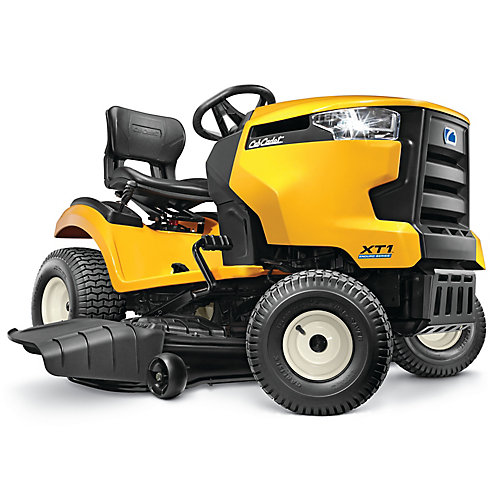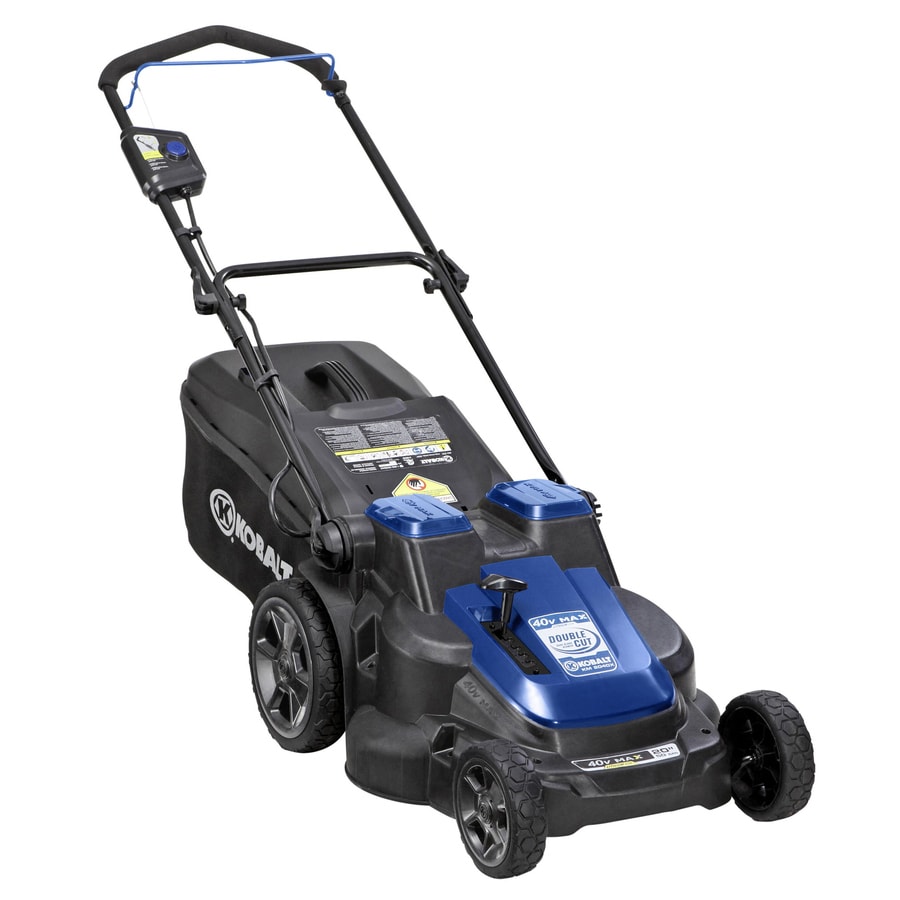A riding lawn mower is a self-propelled lawn mower that is ridden by the operator. It is a common sight in suburban America, where it is used to mow lawns of all sizes.
Riding lawn mowers are more expensive than walk-behind mowers, but they offer a number of advantages. They are faster and easier to use, and they can mow larger areas in less time.
Riding lawn mowers have been around for over a century. The first riding lawn mower was invented in 1914 by John Deere. It was a simple machine, but it revolutionized the way that lawns were mowed. Today’s riding lawn mowers are much more sophisticated than the early models, but they still share the same basic design.
Riding lawn mowers are a popular choice for homeowners who want to mow their lawns quickly and easily. They are a valuable tool for maintaining a beautiful lawn.
Riding Lawn Mower
Riding lawn mowers are a popular choice for homeowners who want to mow their lawns quickly and easily. They offer a number of advantages over walk-behind mowers, including increased speed, ease of use, and the ability to mow larger areas in less time.
- Engine: The engine is the heart of a riding lawn mower. It provides the power to drive the mower’s wheels and blades.
- Transmission: The transmission transfers power from the engine to the wheels and blades.
- Deck: The deck is the housing that encloses the mower’s blades.
- Blades: The blades are the cutting components of a riding lawn mower.
- Controls: The controls allow the operator to steer the mower, adjust the cutting height, and engage the blades.
- Frame: The frame is the structural support for the mower’s components.
- Wheels: The wheels provide mobility for the mower.
These are just a few of the key aspects of a riding lawn mower. By understanding these aspects, you can make an informed decision about which mower is right for you.
Engine
The engine is the most important component of a riding lawn mower. It provides the power to drive the mower’s wheels and blades. Without an engine, the mower would not be able to function.
There are many different types of engines that can be used in riding lawn mowers. The most common type of engine is a gasoline engine. Gasoline engines are relatively inexpensive to operate and maintain. However, they can be noisy and produce emissions. Diesel engines are another option. Diesel engines are more fuel-efficient than gasoline engines. However, they are also more expensive to purchase and maintain.
The size of the engine will determine the power of the mower. A larger engine will produce more power. However, it will also be more expensive to purchase and operate. The size of the engine that you need will depend on the size of your lawn and the type of grass that you have.
It is important to keep the engine of your riding lawn mower properly maintained. This includes changing the oil and filter regularly. It is also important to check the air filter and spark plugs. By following these simple maintenance tips, you can help to extend the life of your engine.
Transmission
The transmission is a key component of a riding lawn mower. It is responsible for transferring power from the engine to the wheels and blades. Without a transmission, the mower would not be able to move or cut grass.
-
Types of Transmissions
There are two main types of transmissions used in riding lawn mowers: manual and automatic. Manual transmissions require the operator to shift gears manually. Automatic transmissions, on the other hand, shift gears automatically. -
Components of a Transmission
The transmission is made up of a number of components, including gears, shafts, and bearings. These components work together to transfer power from the engine to the wheels and blades. -
Maintenance of a Transmission
It is important to properly maintain the transmission of your riding lawn mower. This includes checking the fluid level and changing the filter regularly. By following these simple maintenance tips, you can help to extend the life of your transmission. -
Symptoms of a Bad Transmission
There are a number of symptoms that can indicate a problem with the transmission. These symptoms include difficulty shifting gears, grinding noises, and leaking fluid. If you experience any of these symptoms, it is important to have your transmission inspected by a qualified technician.
The transmission is an essential component of a riding lawn mower. By understanding how it works and how to maintain it, you can help to keep your mower running smoothly for many years to come.
Deck
The deck is a critical component of a riding lawn mower. It is responsible for housing the mower’s blades and ensuring that they cut the grass evenly and efficiently.
The deck is typically made of steel or aluminum and is designed to withstand the rigors of mowing. It is also equipped with a number of features that help to improve the mower’s performance, such as baffles to reduce noise and clippings.
The size of the deck will vary depending on the size of the riding lawn mower. Smaller decks are typically found on mowers that are designed for smaller lawns, while larger decks are found on mowers that are designed for larger lawns.
It is important to keep the deck of your riding lawn mower clean and free of debris. This will help to ensure that the mower cuts the grass evenly and efficiently.
Blades
The blades of a riding lawn mower are the most important component of the machine. They are responsible for cutting the grass and leaving behind a clean, even cut.
Riding lawn mower blades are typically made of steel or aluminum and are designed to withstand the rigors of mowing. They are sharpened on both sides and rotate at high speeds to cut through the grass.
The size and shape of the blades will vary depending on the size and type of riding lawn mower. Smaller blades are typically found on mowers that are designed for smaller lawns, while larger blades are found on mowers that are designed for larger lawns.
It is important to keep the blades of your riding lawn mower sharp. Dull blades will not cut the grass evenly and can damage the mower deck.
Controls
The controls of a riding lawn mower are essential for operating the machine safely and efficiently. They allow the operator to steer the mower, adjust the cutting height, and engage the blades.
The steering wheel allows the operator to control the direction of the mower. The throttle lever controls the speed of the mower. The cutting height lever adjusts the height of the mower deck, which determines the length of the grass that is cut. The blade engagement lever engages the mower blades.
It is important for the operator to be familiar with the controls of the riding lawn mower before operating the machine. The operator should also be aware of the safety precautions that must be taken when operating a riding lawn mower.
Riding lawn mowers are a valuable tool for maintaining a lawn. However, it is important to operate the mower safely and efficiently. By understanding the controls of the riding lawn mower, the operator can ensure that the machine is operated safely and efficiently.
Frame
The frame of a riding lawn mower is a critical component that provides structural support for all of the mower’s other components, including the engine, transmission, deck, and blades. Without a strong and durable frame, the mower would not be able to withstand the rigors of mowing, and it would be more likely to break down.
The frame of a riding lawn mower is typically made of steel or aluminum, and it is designed to distribute the weight of the mower evenly. This helps to prevent the mower from tipping over, even when it is mowing on uneven terrain.
In addition to providing structural support, the frame of a riding lawn mower also serves as a mounting point for the mower’s other components. The engine, transmission, deck, and blades are all attached to the frame, and they rely on the frame to keep them in place.
The frame of a riding lawn mower is an essential component that plays a vital role in the mower’s overall performance. By understanding the importance of the frame, you can better appreciate the design and engineering that goes into these machines.
Wheels
Wheels are an essential component of any riding lawn mower, providing the mobility and traction needed to maneuver around obstacles and efficiently cut grass. They come in various sizes and configurations to suit different mowing needs and terrains.
- Traction Tires: Designed with deep treads and wide profiles, these tires provide excellent grip on uneven or slippery surfaces, ensuring stability and control while mowing.
- Caster Wheels: These smaller, freely rotating wheels are typically found at the front of the mower and allow for easy steering and precise maneuvering in tight spaces.
- Anti-Scalping Wheels: Attached to the mower deck, these wheels prevent the deck from scalping the ground, especially when mowing on uneven terrain or at lower cutting heights.
- Pneumatic Tires: Filled with air, these tires offer a smoother ride, reduce vibration, and provide better cushioning on rough terrain, enhancing operator comfort and reducing fatigue during extended mowing sessions.
The wheels of a riding lawn mower are crucial for its functionality and performance. By understanding the different types of wheels and their specific roles, you can select the right mower for your lawn and ensure optimal mowing results.
Tips for Using a Riding Lawn Mower
To ensure the optimal performance and longevity of your riding lawn mower, it is essential to follow proper operating and maintenance practices. Here are five detailed tips to help you get the most out of your machine:
Tip 1: Regular Maintenance: Regularly check and change the oil, air filter, and spark plugs to keep the engine running smoothly.
Tip 2: Sharp Blades: Keep the mower blades sharp to ensure a clean and even cut. Dull blades can tear the grass, leading to a poor-quality finish.
Tip 3: Proper Mowing Height: Adjust the cutting height according to the type of grass and desired result. Mowing too low can damage the grass and promote weed growth.
Tip 4: Avoid Overlapping: Overlapping your mowing passes can result in scalping and uneven cutting. Maintain a consistent pattern to achieve a professional-looking lawn.
Tip 5: Clean the Deck: After each use, clean the mower deck to prevent grass clippings from building up and obstructing airflow.
By following these tips, you can ensure that your riding lawn mower delivers a superior cutting performance, enhances the appearance of your lawn, and extends the life of your machine.
Understanding these maintenance and operating practices will lay the foundation for the final section of this article, which will delve into troubleshooting common problems and providing additional guidance for optimal riding lawn mower usage.
Conclusion
Throughout this article, we have explored the various components, functions, and best practices associated with riding lawn mowers. Understanding the intricacies of these machines empowers us to make informed decisions when selecting and maintaining our equipment.
Key points to remember include the importance of regular maintenance for optimal performance, the significance of sharp blades for a clean cut, and the need to adjust the mowing height to suit the grass type and desired result. By adhering to proper operating techniques and maintenance schedules, we can ensure a well-manicured lawn and extend the lifespan of our riding lawn mowers.
As we continue to advance in the realm of lawn care, it is essential to stay abreast of technological advancements and sustainable practices that can enhance our mowing experience. By embracing innovation and incorporating environmentally friendly techniques, we can contribute to a greener and more beautiful future.




